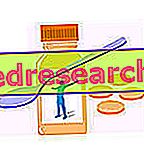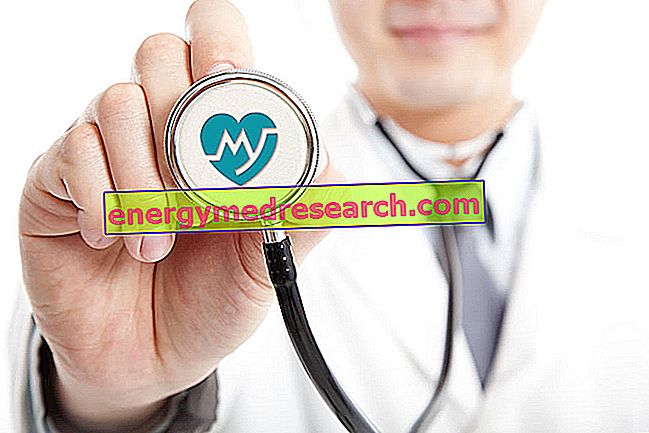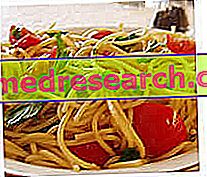What's this
What is zinc?
Zinc is a chemical element with the symbol Zn and atomic number 30.

It is the first factor in group 12 of the periodic table. In some respects zinc is chemically similar to magnesium: both elements show only a normal oxidation state (+2); moreover, the Zn2 + and Mg2 + ions have similar dimensions.
Zinc is the 24th most abundant element in the earth's crust and has five stable isotopes. The most common zinc mineral is sphalerite (zinc blende - zinc sulfide). Zinc is naturally widespread in inorganic and organic form. The science of compounds that contain carbon-zinc bonds, and which describe their physical properties, synthesis and chemical reactions, is called chemistry of organozinc reactants / compounds.
Biological Functions
Zinc biological functions
For more information read: Zinc Functions.
Zinc is a trace element necessary for humans and many other animals, but also for plants and various microorganisms. It represents the second most abundant metal "trace" in humans after iron and is the only metal that appears in all classes of biological catalysts but not only. In fact, it is also necessary for the proper functioning of many hormones, including insulin, growth hormone and sex hormones. The body contains a lot of it in the muscles, in the red blood cells and in the white ones; however, large concentrations of zinc can be found mainly in the organs. It is indispensable for the functioning of over 300 enzymes and 1000 transcription factors. It is stored and transferred to metallothioneins (MT) - a family of proteins rich in cysteine, with low molecular weight, mainly located in the Golgi apparatus, capable of binding physiological and xenobiotic metals. There are therefore very many biological catalysts of human cells that centrally present a zinc atom, for example alcohol dehydrogenase - an enzyme necessary to metabolize ethyl alcohol.
Zinc is also very important for the development of the embryo and fetus, and for the postnatal growth of the newborn and baby. It has an antioxidant function which, although indirect, is very important to counteract oxidative stress.
Nutrition
Recommended levels of zinc
In 2001, the "US Institute of Medicine" (IOM) updated the "Estimated Average Requirements" (EARs - average estimated requirements) and the "Recommended Dietary Allowances" (RDAs recommended) for zinc. Note : the RDAs are superior to the EARs in order to guarantee also the coverage of the needs related to people with higher than average requirements.
The current EAR for zinc - from 14 years onwards - is respectively 6.8 mg / day for men and 9.4 mg / day for women .
The RDA for adult men is 8 mg / day ; for women of the same age group it is 11 mg / day . The RDA for pregnant women is 11 mg / day . In lactation it is 12 mg / day . For children up to 12 months it is 3 mg / day ; up to 13 years is 8 mg / day .
Regarding zinc safety, IOM has declared a " Tolerable upper intake levels " (ULs - maximum tolerable intake levels) for adults of 40 mg / day - for children it is lower. Note : UL, like EAR and RDA, are "Dietary Reference Intakes" (DRIs - reference dietary assumptions).
The "European Food Safety Authority" (EFSA - European authority for food safety) refers to the "Dietary Reference Values" (DRV - dietary reference values) for "Population Reference Intake" (PRI - reference / recommended intake of the population), instead of RDA, and to the "Average Requirement" (AR - average requirement), instead of EAR.
| Population | RDA |
| Adult Males | 8 mg / day |
| Adult Females | 11 mg / day |
| Pregnancy | 11 mg / day |
| Nursing nurses | 12 mg / day |
| Children up to 12 months | 3 mg / day |
| Children up to 3 years | 8 mg / day |
| Population | PRI |
| Infants 6-12 months | 3 mg / day |
| Children 1-3 years old | 5 mg / day |
| Children 4-6 years old | 6 mg / day |
| Children 7-10 years | 8 mg / day |
| Male teenagers 11-17 | 12 mg / day |
| Female teenagers11-17 | 9 mg / day |
| Men | 12 mg / day |
| Women | 9 mg / day |
| Pregnancy | 11 mg / day |
| Feeding time | 12 mg / day |
* PRI : recommended intake for the population, from LARN - Recommended Levels of Nutrient Intake for the Italian population
For people aged 18 or over, PRI calculations are complex, as EFSA has set ever higher values in relation to the increase in phytate content - chelating anti-nutrients - in the diet. For women with a phytate intake it increases from 300 to 1200 mg / day, the PRI increases to 7.5 - 12.7 mg / day ; for men the range is between 9.4 and 16.3 mg / day . Note : these PRIs are superior to US RDAs. EFSA has also set its UL to 25 mg / day, so much less than the US values.
In the labeling of food supplements and dietary foods in the United States, the intake of zinc is expressed as a percentage of the "Daily Value" (% DV). Still on the subject of labeling, before May 27, 2016, 100% of the daily value was 15 mg, after this date it was revised to 11 mg. Food and supplement companies have until 1 January 2020 to adapt to changing parameters.
Food
Foods rich in zinc
The main sources of zinc are: fish, red meat, cereals, legumes, dried fruit and algae. Plant zinc is less available because by binding to phytic acid it can form an insoluble complex that is not absorbed.
For more information we recommend reading: Foods rich in zinc.
Supplements and dietary foods with zinc
There are many studies that have tried to demonstrate the greater or lesser tendency to intestinal absorption of the various types of zinc. As often happens, in-depth studies have given conflicting results; this is why we recommend, in case of suspected zinc deficiency, to use any type of reinforced food, regardless of the chemical-physical form of the mineral.
shortage
Zinc nutritional deficiency
Zinc deficiency is usually due to insufficient dietary intake, but can be traced to: malabsorption, enteropathic acrodermatitis, chronic liver disease, chronic kidney disease, sickle cell anemia, diabetes, malignant tumors and other chronic diseases.
The population groups at risk of zinc deficiency are: elderly, children in developing countries and with renal dysfunction.
In the United States, a federal food consumption survey determined that, for women and men over the age of 19, average consumption was 9.7 and 14.2 mg / day respectively. Of women, 17% consumed less than the value suggested by the AER; of men, only 11%. Rates lower than EAR tend to increase with age. The latest published update reported lower averages (9.3 and 13.2 mg / day respectively).
Symptoms of zinc deficiency
The symptoms of mild zinc deficiency are of different types. The most relevant clinical events include: growth reduction, diarrhea, impotence, delayed sexual maturation, alopecia, ocular and cutaneous lesions, alteration of appetite, alteration of cognition, immune alterations, defects in carbohydrate metabolism and reproductive teratogenesis. May predispose to a vitamin A deficiency.
A slight deficiency of zinc suppresses the immune defenses, even if the same can happen with a nutritional excess.
Did you know that ...
Interestingly, animals that suffer from a zinc deficiency require twice as much food to achieve the same weight gain as animals with sufficient zinc.
Vegetarian and vegan diet: do they cause zinc deficiency?
Despite some concerns related to excess phytates, vegetarians and western vegans do not suffer from nutritional zinc deficiency more than carnivores.
It seems to be possible to take zinc only from foods of vegetable origin. However, it is undeniable that phytates - found mainly in whole grains, legumes, etc. - as well as excess dietary fiber, they can interfere with zinc absorption. Phytic acid tends to chelate the zinc present in the seeds and in the bran of cereals, and this can contribute to the malabsorption of the mineral. The excess fibers instead, increase the intestinal transit and decrease the general absorption. Some data suggest that, in those whose diets are rich in phytates such as some vegans, a zinc intake higher than the US RDA (15 mg / day) may be required. However, these considerations must take into account the scarcity of adequate biomarkers for zinc; the most used indicator, plasmatic zinc, has in fact poor sensitivity and specificity. Recognizing zinc deficiency is therefore, at times, very complicated.
Zinc deficiency and mortality
Nearly two billion people in developing countries have a zinc deficiency. In children, this causes an increase in infections and diarrhea, which contribute to the death of around 800, 000 children a year worldwide.
The World Health Organization (WHO) promotes the increase of nutritional zinc to counteract severe malnutrition and diarrhea. Zinc supplements help prevent disease and reduce deaths, especially among children with low birth weight and / or rickets. However, zinc supplements should not be administered alone; in fact, zinc interacts with other nutrients and it must not be forgotten that in developing countries nutritional deficiencies are often of various types.
Toxicity
Zinc toxicity
Although zinc is an essential nutrient for health, it can be harmful in excess.
Too high an intake and absorption suppress the absorption of copper and iron.
The free zinc ion, in solution, is highly toxic to: plants, invertebrates and even vertebrate fish. Even micromolar amounts of the free ion Zn2 + are able to kill some organisms. A recent study has shown that 6 micromolar free zinc eliminates 93% of the population of Daphnia - a planktonic crustacean aquatic organism.
The free zinc ion is a powerful Lewis acid and can be corrosive. The gastric juices contain hydrochloric acid, in which the metallic zinc dissolves easily, giving rise to a corrosive compound. Swallowing a fragment of a 97.5% American penny can cause damage to the gastric mucosa due to its high solubility.
The main toxic effects occur as a result of prolonged intakes at doses above 150 mg / day and are represented by: anemia, reduction of HDL cholesterol - good cholesterol - and depression of immune function. Acute toxicity is rare because taking large doses causes vomiting. Zinc does not appear to interact negatively with any drug.
Individuals taking 100-300 mg of zinc daily may suffer from secondary copper deficiency. A 2007 study found that older people taking 80 mg / day of zinc were more often hospitalized for urinary complications than those taking a placebo. Levels of 100-300 mg may interfere with the absorption of copper and iron, or negatively affect cholesterolemia - reduction of HDL. Contributions higher than 500 ppm (parts per million) in the soil interfere with the absorption of the plant by other essential metals, such as iron and manganese. Inhalation of zinc fumes - for example when welding galvanized materials - can lead to a clinical picture known as "zinc shakes". Zinc is a common ingredient in dental prostheses or pastes intended for repairs, which can contain 17-38 mg / g. Disabilities and even deaths due to the excessive or incorrect use of these products have been claimed.
The US Food and Drug Administration (FDA) states that zinc damages nerve receptors in the nose, causing anosmia. Cases of this complication were also observed in the 1930s, when zinc preparations were used to try to prevent polio infections. On June 16, 2009, the FDA ordered the withdrawal of zinc-based nasal sprays. Loss of smell can in fact be life-threatening, because people suffering from anosmia cannot detect gas or smoke leaks and may not notice the bad state of food preservation.
Poisoning
Zinc poisoning
In 1982, the "US Mint" began to mint pennies coated with copper but containing mainly zinc. Zinc pennies represent a risk of toxicosis, which can also be fatal.
The zinc content of some coins can cause fatal zinc poisoning in dogs, causing severe haemolytic anemia and damage to the liver or kidneys; vomiting and diarrhea are possible symptoms. Zinc is highly toxic to parrots and poisoning is often fatal. The consumption of food stored in galvanized jars has caused mass poisoning of parrots.
Drugs and Supplements
Zinc-based drugs and supplements: what are they for?
For more information read also: Properties of Zinc
Zinc is used in a multitude of various types of products; it is present above all in: drugs (for internal or topical use), food supplements, food additives, sunscreens, mouthwashes, deodorants, baby powder, hair cleaners, dentures and dentures, fabrics, etc.
In fact, zinc compounds have many properties: deodorant, sun screen, antibacterial, antiviral, anti-itching, anti-dandruff, etc. They are useful in the fight against certain skin discomforts, to counteract bacterial gastroenteritis and, in general, diarrhea. The only remedy for zinc genetic deficiency, it is also useful for the prevention of age-related macular degeneration. It is hypothesized that, in certain cases, it may perform an antidepressant action.
Bibliography
- "Zinc" - Wayback Machine., Pp. 442–501 in Dietary Reference Intakes for Vitamin A, Vitamin K, Arsenic, Boron, Chromium, Copper, Iodine, Iron, Manganese, Molybdenum, Nickel, Silicon, Vanadium, and Zinc. National Academy Press. 2001.
- "Overview of Dietary Reference Values for the EU population as derived by the EFSA Panel on Dietetic Products, Nutrition and Allergies" (PDF). 2017.
- Tolerable Upper Intake Levels For Vitamins And Minerals (PDF), European Food Safety Authority, 2006,
- "Federal Register May 27, 2016 Food Labeling: Revision of the Nutrition and Supplement Facts Labels. FR page 33982" (PDF).
- "Changes to the Nutrition Facts Panel - Compliance Date"
- Ensminger, Audrey H .; Konlande, James E. (1993). Foods & Nutrition Encyclopedia (2nd ed.). Boca Raton, Florida: CRC Press. pp. 2368-2369.
- "Zinc content of selected foods for common measure" (PDF). USDA National Nutrient Database for Standard Reference, Release 20. United States Department of Agriculture. Archived from the original on March 5, 2009. Retrieved December 6, 2007.
- Allen, Lindsay H. (1998). "Zinc and micronutrient supplements for children". American Journal of Clinical Nutrition. 68 (2 Suppl): 495S – 498S.
- Rosado, JL (2003). "Zinc and copper: proposed fortification levels and recommended zinc compounds". Journal of Nutrition. 133 (9): 2985S – 9S.
- Hotz, C .; DeHaene, J .; Woodhouse, LR; Villalpando, S .; Rivera, JA; King, JC (2005). "Zinc absorption from zinc oxide, zinc sulfate, zinc oxide + EDTA, or sodium-zinc EDTA does not differ when added as fortificants to maize tortillas". Journal of Nutrition. 135 (5): 1102–5.
- Moshfegh, Alanna; Goldman, Joseph; and Cleveland, Linda. (2005). What We Eat in America. NHANES 2001–2002: Usual Nutrient Intakes from Food Compared to Dietary Reference Intakes. US Department of Agriculture, Agricultural Research Service. Table A13: Zinc.
- What We Eat In America, NHANES 2013–2014
- NRC 2000, p. 442
- Ibs, KH; Rink, L. (2003). "Zinc-altered immune function". Journal of Nutrition. 133 (5 Suppl 1): 1452S – 6S.
- "Position of the American Dietetic Association and Dietitians of Canada: Vegetarian diets" (PDF). Journal of the American Dietetic Association. 103 (6): 748–65. 2003.
- Freeland-Graves JH; Bodzy PW; Epright MA (1980). "Zinc status of vegetarians". Journal of the American Dietetic Association. 77 (6): 655–661.
- Hambidge, M. (2003). "Biomarkers of trace mineral intake and status". Journal of Nutrition. 133. 3 (3): 948S – 955S.
- WHO contributors (2007). "The impact of zinc supplementation on childhood mortality and severe morbidity". World Health Organization.
- Shrimpton, R .; Gross, R .; Darnton-Hill, I .; Young, M. (2005). "Zinc deficiency: what are the most appropriate interventions?". British Medical Journal. 330 (7487): 347–9.
- Eisler, Ronald (1993). "Zinc Hazard to Fish, Wildlife, and Invertebrates: A Synoptic Review" (PDF). Contaminant Hazard Reviews. Laurel, Maryland: US Department of the Interior, Fish and Wildlife Service (10). Archived from the original on March 6, 2012.
- Muyssen, Brita TA; De Schamphelaere, Karel AC; Janssen, Colin R. (2006). "Mechanisms of chronic waterborne Zn toxicity in Daphnia magna". Aquatic Toxicology. 77 (4): 393–401.
- Bothwell, Dawn N .; Mair, Eric A .; Cable, Benjamin B. (2003). "Chronic Ingestion of a Zinc-Based Penny". Pediatrics. 111 (3): 689–91.
- Johnson AR; Munoz A; Gottlieb JL; Jarrard DF (2007). "High dose zinc increases hospital admissions two to genitourinary complications". J. Urol. 177 (2): 639–43.
- "Lawsuits blame denture adhesives for neurological damage". Tampa Bay Times. February 15, 2010.
- Oxford, JS; Öberg, Bo (1985). Conquest of viral diseases: a topical review of drugs and vaccines. Elsevier. p. 142.
- "FDA says Zicam nasal products harm sense of smell". Los Angeles Times. June 17, 2009.
- SD love; Cabello CM; Wondrak GT (2010). "The topical antimicrobial zinc pyrithione is a heat shock response inducer that causes DNA damage and PARP-dependent energy crisis in human skin cells". Cell Stress Chaperones. 15 (3): 309–22.
- Barceloux, Donald G .; Barceloux, Donald (1999). "Zinc". Clinical Toxicology. 37 (2): 279–292.
- Bennett, Daniel RMD; Baird, Curtis JMD; Chan, Kwok-Ming; Crookes, Peter F .; Bremner, Cedric G .; Gottlieb, Michael M .; Naritoku, Wesley YMD (1997). "Zinc Toxicity Following Massive Coin Ingestion". American Journal of Forensic Medicine and Pathology. 18 (2): 148–153.
- Fernbach, SK; Tucker GF (1986). "Coin ingestion: unusual appearance of the penny in a child". Radiology. 158 (2): 512.
- Stowe, CM; Nelson, R .; Werdin, R .; Fangmann, G .; Fredrick, P .; Weaver, G .; Arendt, TD (1978). "Zinc phosphide poisoning in dogs". Journal of the American Veterinary Medical Association. 173 (3): 270.
- Reece, RL; Dickson, DB; Burrowes, PJ (1986). "Zinc toxicity (new wire disease) in aviary birds". Australian Veterinary Journal. 63 (6): 199.



